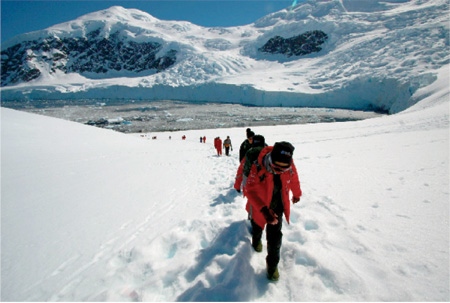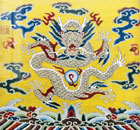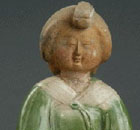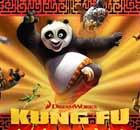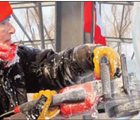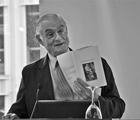Travel
Trekking the frozen wasteland
By Ming Yeung (HK Edition)
Updated: 2011-01-19 07:19
 |
Large Medium Small |
|
Hong Kong high school students journeyed on a voyage to Antarctica last month. Photos Provided to China Daily |
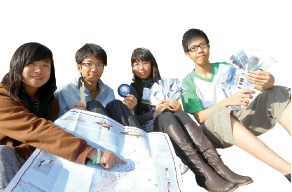

Hong Kong high school students set out on the trip of a lifetime in December. Their 18-day voyage took a trip to Antarctica, on a mission to learn about the effects of climate change on one of the world's most delicate environments. Ming Yeung reports.
Lloyd Chan will never forget what probably was the coldest day he'd ever encountered during his young life. There he was, along with fellow high school students and their guides - making the grueling climb to the top of a snow-covered mountain - on the remotest and most isolated part of the globe - Antarctica.
The slippery, one-hour climb probably was most difficult for Camilla Poon - the most petite member of the team of Hong Kong students.
"One step up and I would slip two steps down. The one behind me had to push me up," Poon chuckles.
Poon, a Form 5 student born with a bilateral hearing impairment, relies on a cochlear implant in one ear. She started to learn to read lips when she was a baby and when the time came for her to go to school she was able to enroll at an ordinary elementary school.
The mission was to reach the summit, then turn around immediately and slide down the natural chute, all the way to the bottom.
All 17 Hong Kong high school students who journeyed on an 18-day, once-in-a-lifetime, all-expenses-paid voyage to Antarctica last month, went on what was intended to be a life-changing expedition.
The trek was co-organized by Yan Oi Tong and Hong Kong Discovery.
The voyage to Antarctica was the designated mission last year, of Mighty Rovers, an annual, corporate social responsibility program. Mighty Rovers was pioneered by HK Discovery in 2006 to create greater awareness about local and global environmental issues as well as concern for humanity and to provide once-in-a-lifetime experiences for expedition participants.
To enrich the students' experience they were accompanied by experts, like famed polar explorer and founder of the China Polar Museum Foundation, Rebecca Lee, and Chan Lung-sang, renowned geologist and Earth Science professor at the University of Hong Kong (HKU).
Never before has a team of Asian students reached this almost inaccessible part of the planet. Their mission, however, was not so much about being the first to get there as it is about raising awareness of climate change and the effect it is creating, as witnessed by the rapid depletion of the polar ice caps.
During their stay in the southern polar regions they implemented green projects not unlike those they had been challenged to devise as part of their selection process. The projects were to focus on spreading the message about the urgency of environmental conservation.
Their journey took them by way of Ushuaia, Argentina, and from there they embarked on a rocky voyage, sailing through Drake Passage and crossing the Antarctic Convergence. The passage is dotted with spectacular sights from vistas of icebergs, seabirds, and even whales.
Being on the ship for nearly two days can be a grind but not this voyage. During their journey the students talked to many crew members, each of whom was expert in some field. They met an Australian historian who had traveled to the Antarctic 38 times. Another was an ornithologist who claimed to have seen more than 90 percent of bird species on the earth.
The frozen and windswept no man's land of Antarctica has been a perilous challenge to explorers since Norwegian explorer Roald Amundsen became the first person to reach the South Pole in December 1911. The December voyage was set for the local youths, in order to give the expedition some break during the southern continent's extremely short summer, Jan Chan, managing director of HK Discovery, says.
"Only in summer does Antarctica allow expedition boats to get in and non-scientific parties to set foot on the continent," Chan says.
Besides that, with temperatures hovering around zero Celsius, the risks of extreme weather and frostbite are minimal. In view of the relatively warm weather with the temperature ranging from a few degrees Celsius above and below zero, all the worries over extreme weather and fretting over frostbite were set aside. The students were well equipped, with cold weather gear, including waterproof and breathable outerwear and down jackets. Their gear also included GPS devices so that no one could get lost.
Henry Chan missed the mountain climbing expedition and chose instead to go sailing on a zodiac to explore for icebergs and wild animals. He still regrets missing his only chance to slide down the snow mountain, adding, however, "For that I was able to see whales in a very close distance."
As might be expected, the students saw penguins everywhere and orange-colored excrement, layer upon layer, which one of the travelers described as looking like "tiramisu" from afar.
During their delightful encounters with penguins, they learned a lesson to be considerate. Their tromps left knee-height holes in the snow-covered land where the penguins might accidentally fall into and being trapped.
"Every step we walked pass, we had to smooth out the holes behind us," Clara Fung, a green advocator in an international school, explains.
When asked what impresses them most from the Antarctica trip, Henry Chan realizes what a naive brag used to be himself, aiming to garner evidence of global warming. "What I saw in the trip was far beyond my imagination."
He was referring to picturesque scenery he saw on Peterman Island. The sky was clear, the mountains were covered by a slight sheer of mist and the sun was cuddled by a rainbow. "I couldn't help looking at the same spot. I was dazzled by the beauty of our mother nature."
One of the most anticipated events was the visit to China's polar research facility, Great Wall Station on King George Island.
That proved probably to be the biggest disappointment of the expedition. The scientists did little more than tell the students "the scientists at the facility represent the Chinese government, to be there to contribute to the people's welfare," expedition member Clara Fung recites.
The erudite professor from the HKU, Chan, however, made up for the disappointed. He presented the trekkers a one-hour lecture about the history of rocks and the earth. "It did freeze our butts off but it's so unforgettable," Fung recalls.
More than 100 potential "Polar Care Ambassadors" were chosen from among 300 applicants to the program in July. They were called upon to undergo a series of intensive training sessions, including field study and Outward Bound training. They took a 20-hour course and workshop on the ecosystem and climate change at the South Pole. What they gained in the four-day training was not building up physical strength but the elements they need to be well-rounded people.
After that, 15 Form 4 to Form 6 students from various banding schools and two from vocational education institutes were short-listed to embark on the trip.
Professor Chan was thrilled that some of the chosen students come from grassroots families or schools with only scant resources which never could afford an expedition trip on their own.
Camilla Poon found the training very challenging. She felt concerned when called upon to jump into water without putting her hearing aid on. "It was a fair competition, everyone worked as hard as I did," Poon says. But she needed to pay closer attention and stand in front of speakers to read their lips to avoid misunderstanding.
Poon said she applied to become a member of the expedition because she wanted to acquire a broader perspective and greater knowledge of how climate change is affecting the Antarctic ecosystem.
"The training during the summer was not just for preparation for the trip, what counted the most were the teamwork spirits and problem-solving abilities, and how involved they were in promoting environmental protection," Jan Chan says. "They represent Hong Kong, and their behavior affects how foreign people see us."
Lloyd Chan, another ambassador, is not a green activist at his school. But prior to departure he told China Daily, "I want to know about their work and how they see the problem of global warming."
Parents would sometimes hesitate to allow their children to go on an expedition such as this, but Henry Chan's father encouraged his son to apply.
Citing a serious problem of paper wastage at his school, Chan decided to advocate reducing paper waste by teaching teachers how to set proper margins on documents before printing and promoting self-made notebooks from waste paper among students. His hard work was well received.
The highest adventure for the young members of the expedition may have come on the voyage back, when their ship was caught in a violent storm crossing Drake Passage.
The students, who were sitting dispersed in the high-ceilinged library, slid to one side when the storm tilted the ship at an acute angle. One student hurt his neck and could barely speak for the rest of the way home.
"When we got back to check our things afterwards, the rooms looked like battle-fields," Clara Fung recalls, adding, "I would not have imagined it was the boys who couldn't stand the waves. Once we embarked on the ship, the tallest guy threw up immediately."
The expedition members will visit schools in the city in February or March to share their experience of Antarctica with other students and the public at large.
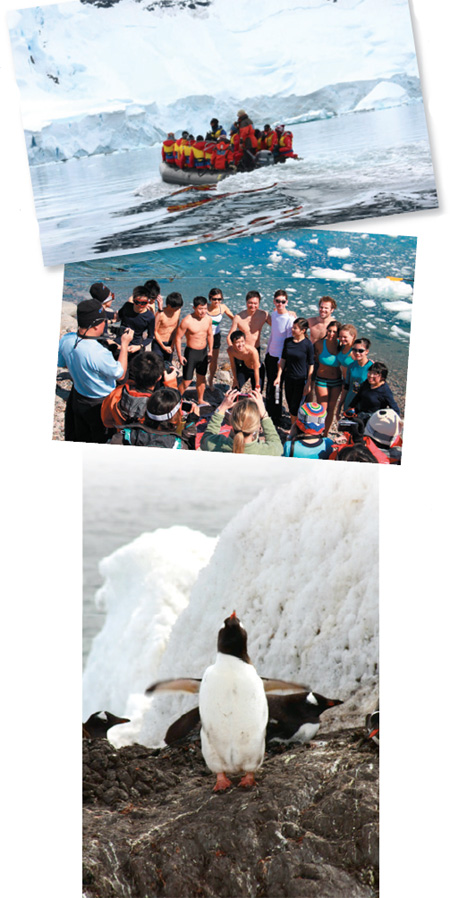
(HK Edition 01/19/2011 page4)
